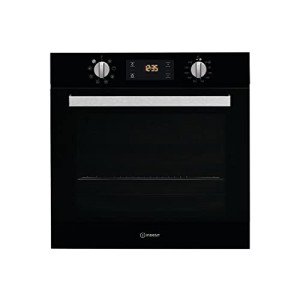Blog entry by Brooks Stonge
A Comprehensive Guide to Buying a Single Oven: What You Need to Know
When it concerns kitchen appliances, couple of items are as essential as an oven. Whether you're a devoted baker, a weekend chef, or somebody who simply wishes to warm up leftovers, the best oven can make all the distinction in food preparation and cooking. Among the various types of ovens readily available in the market, single ovens stick out for their adaptability and area efficiency. This article will direct you through the vital factors to consider when purchasing a single oven, laying out key functions, types, and answering often asked concerns.

Understanding Single Ovens
Single ovens, as the name suggests, include one cooking cavity. They are developed to deal with various cooking tasks, consisting of baking, roasting, grilling, and broiling. Perfect for compact kitchen areas or those who do not require the additional space used by double ovens, single ovens can be built into kitchen cabinetry or stand alone.
Kinds Of Single Ovens
Single ovens been available in various types, each offering distinct benefits. Here are the main types to consider:
| Type | Description |
|---|---|
| Conventional | Utilizes top and bottom heating aspects for standard cooking designs. |
| Convection | Employs a fan to distribute hot air, resulting in even cooking temperatures. |
| Wall Ovens | Built into the wall for space-saving style while remaining user-friendly. |
| Steam Ovens | Introduces steam for damp cooking, excellent for baking and reheating. |
| Microwave Ovens | Integrates cooking and reheating performances with microwave innovation. |
Secret Features to Consider
When looking for a single oven, it's essential to assess different features that can enhance cooking experience and effectiveness. Below are some essential characteristics to consider:
Size and Capacity:
- Measure the readily available area in your kitchen before choosing an oven. The majority of single ovens range from 24 to 30 inches in width.
- Capacity usually ranges from 2.0 to 5.0 cubic feet, depending on how much you generally prepare or bake.
Energy Efficiency:
- Look for models with an Energy Star ranking to reduce energy usage and lower energy costs.
Oven Types:
- Consider whether you choose a standard or convection design based upon your cooking preferences.
Control board:
- Choose user-friendly controls, whether they are digital or analog.
- Touch controls frequently include advanced features like programmable settings and timers.
Self-Cleaning Functionality:
- Self-cleaning choices save time and effort. Try to find ovens with steam or pyrolytic cleaning alternatives.
Extra Features:
- Features such as hold-up start timers, numerous rack positions, and built-in probes can significantly boost the cooking experience.
Popular Brands
When acquiring an oven, it is a good idea to consider brands known for their reliability and quality. Some of the prominent brands in the market consist of:
- Bosch
- Samsung
- LG
- Whirlpool
- Electrolux
- Frigidaire
Steps to Buy a Single Oven
Follow this structured procedure to simplify your buying choice:
Determine Your Cooking Needs:
- Assess your cooking habits and how often you use the oven.
Set a Budget:
- Single ovens can differ considerably in price from a couple of hundred to a number of thousand dollars. Set an affordable spending plan to improve your choices.
Research Online:
- Read reviews on numerous models to identify dependability, efficiency, and features.
Visit Showrooms:
- Visit home appliance display rooms to see the ovens up close, examine their quality, and understand their functions.
Request Expert Advice:
- Consult with sales agents or cooking specialists for recommendations based on your needs.
Compare Warranty Options:
- Look into the service warranty policies. A thorough service warranty can offer assurance.
FAQs
1. What is the distinction between a traditional oven and a convection oven?
Standard ovens use top and bottom heat sources for cooking, while stove use a fan to flow hot air, leading to quicker and more even cooking.
2. Can I install a single oven myself?
While some house owners choose to install their ovens, it's typically advised to work with a professional to ensure safety and compliance with local structure codes.
3. How often should I clean my oven?
Frequency depends upon usage. A self-cleaning oven can significantly minimize the frequency, while manual cleansing needs to ideally be carried out seasonally if used regularly.
4. What additional features should I try to find?
Try to find features such as a timer, delay start, and extra cooking modes like air fry or steam for boosted functionality.
5. Are gas ovens much better than electric ovens?
The choice in between gas and electric depends mostly on individual preference. Gas offers instant heat and is typically preferred by expert chefs, while electric ovens normally offer more consistent cooking temperature levels.
Investing in a single oven can raise your cooking experience, paving the way for more pleasurable meal preparation and creativity in the kitchen. As you Buy A Single Oven the perfect oven, consider your cooking habits, the oven's functions, and your offered cooking area. Take your time to explore different choices, and by following the assistance provided in this article, you can make an educated choice that fulfills both your culinary needs and spending plan requirements.
In summary, the best single oven will not only boost your cooking effectiveness however also make your kitchen a more pleasurable space for cooking exploration. Pleased cooking!

